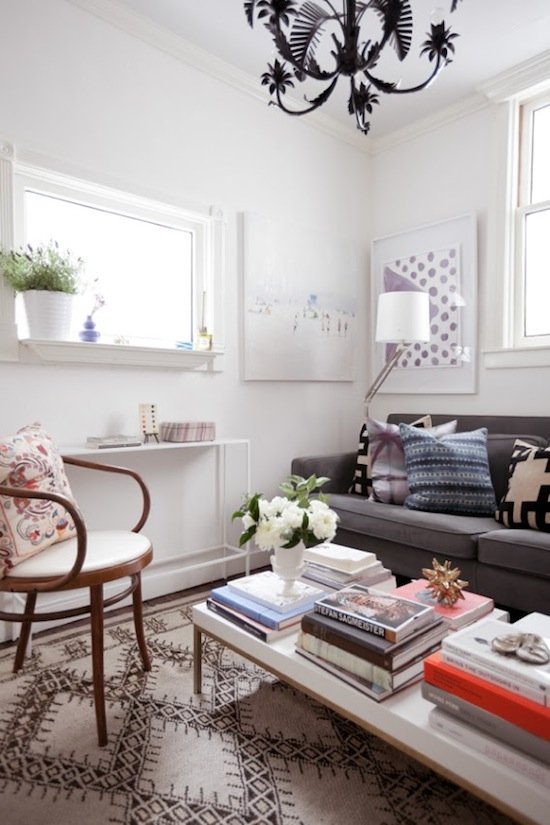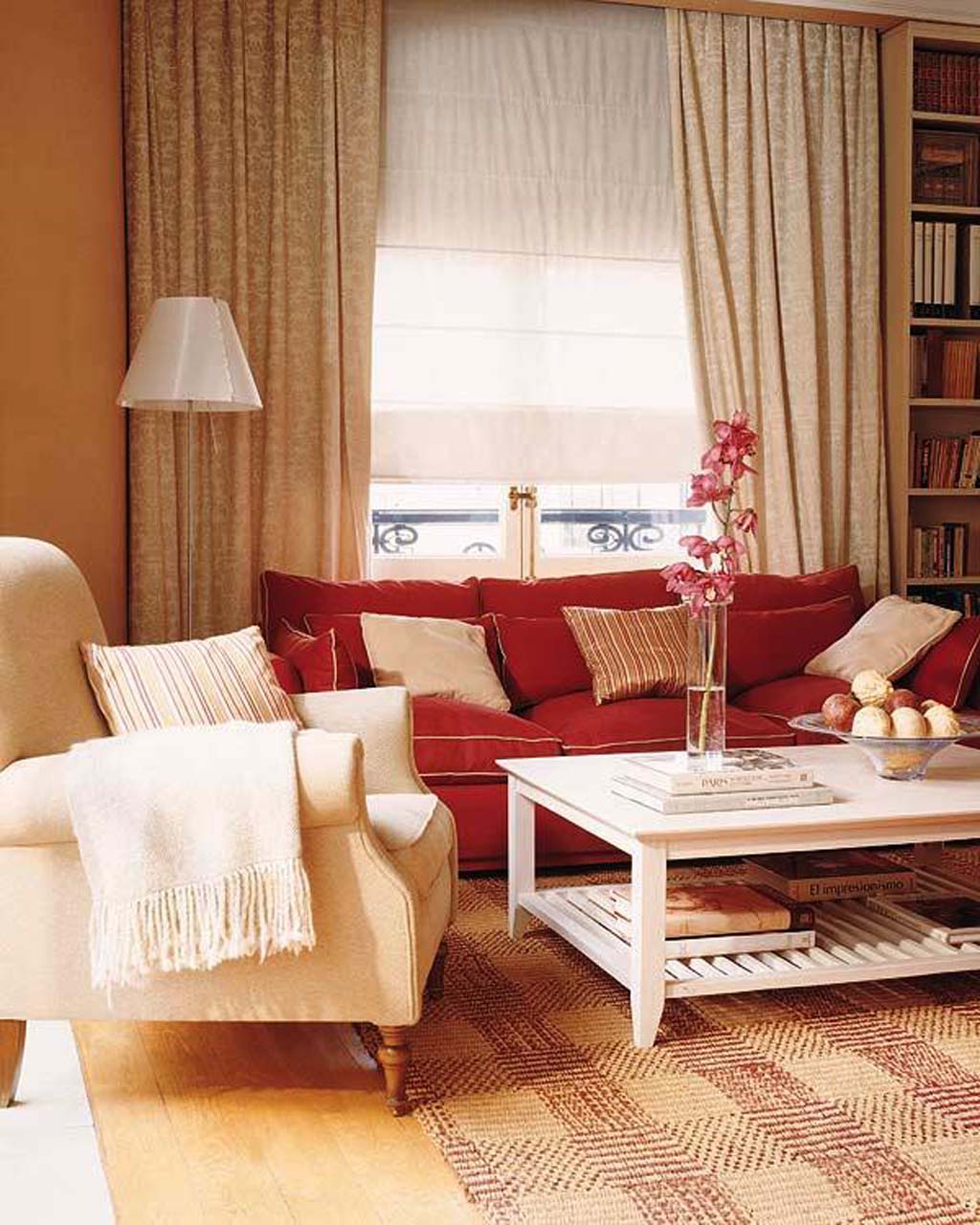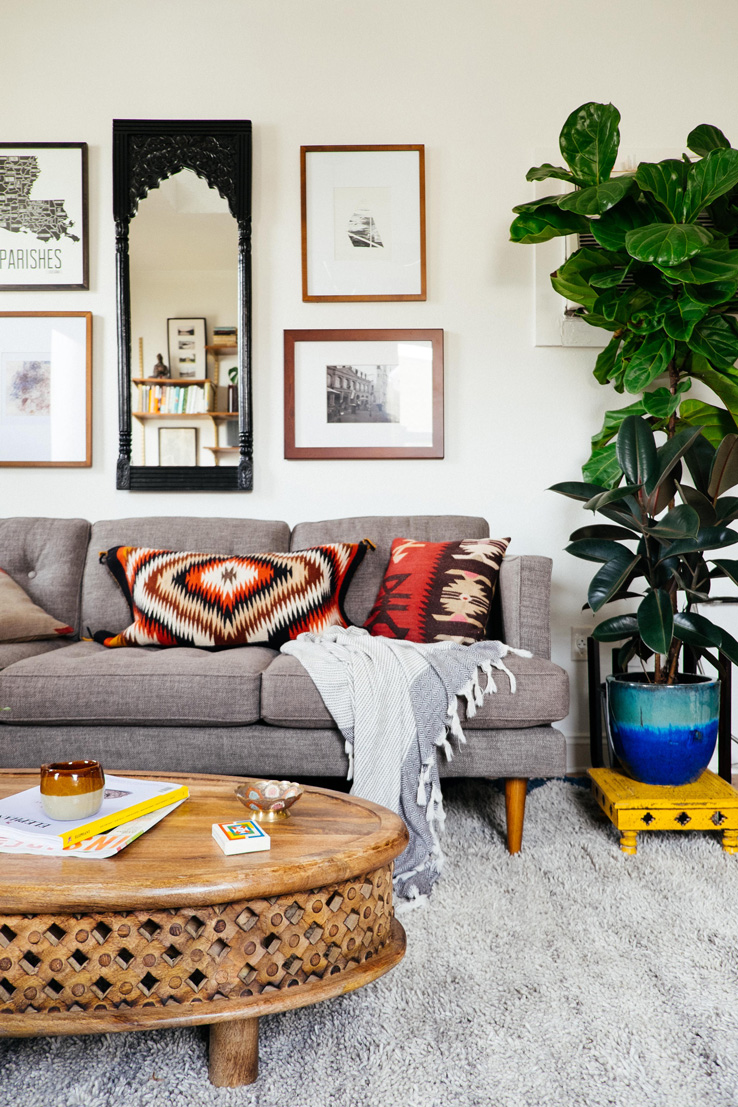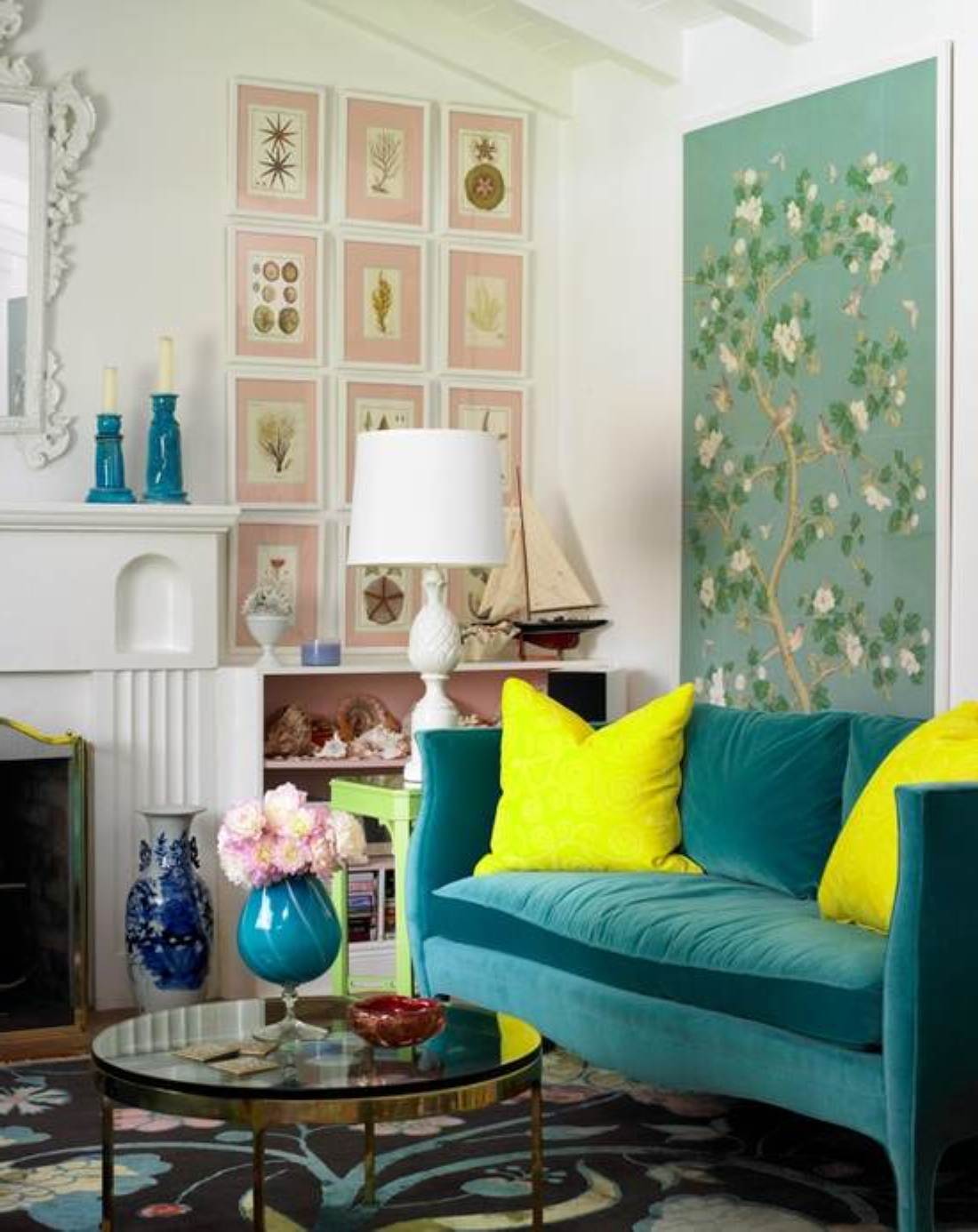Small Space? Big Living Room Ideas!
Small Space? Big Living Room Ideas!
Living in a smaller space doesn't mean compromising on style or comfort. In fact, designing a small living room can be incredibly rewarding, forcing you to be creative and strategic with your furniture and decor choices. The key is to maximize space, enhance functionality, and create an inviting atmosphere that feels both cozy and spacious. This comprehensive guide will delve into numerous small living room ideas, helping you transform your compact space into a stylish and functional haven.
I. Maximizing Space: The Foundation of Small Living Room Design
Before diving into aesthetics, let's address the fundamental challenge: maximizing space. Several key strategies can dramatically improve the perceived size and functionality of your small living room.
A. Decluttering and Organization: The First Step
This may seem obvious, but it's the most crucial step. A cluttered space instantly feels smaller and more chaotic. Before even considering new furniture, embark on a thorough decluttering process.
- Ruthless Purging: Be honest with yourself. Do you really need that extra throw pillow or that stack of magazines you haven't touched in months? Donate, sell, or discard anything you don't use or love.
- Strategic Storage: Invest in multi-functional furniture that incorporates storage. Ottomans with hidden compartments, coffee tables with drawers, and shelving units can dramatically increase storage capacity without sacrificing valuable floor space. Consider using vertical space with tall, narrow bookshelves.
- Hidden Storage Solutions: Utilize baskets, bins, and decorative boxes to conceal clutter and maintain a clean, uncluttered look. These can be placed under furniture or on shelves.
B. Light and Bright Color Palette: Expanding Your Space Visually
Color plays a significant role in how we perceive space. A carefully chosen color palette can make a small room feel significantly larger.
- Light and Neutral Colors: Opt for light and neutral colors on the walls, such as whites, creams, pastels, or light grays. These colors reflect light, making the room feel brighter and more spacious.
- Accent Colors Strategically: Introduce pops of color through accessories, throw pillows, artwork, or rugs. This adds personality without overwhelming the space. Avoid using too many bold or dark colors, as they can make the room feel smaller and heavier.
- Mirrors, Mirrors on the Wall: Strategically placed mirrors can create the illusion of more space by reflecting light and creating depth. A large mirror on a wall opposite a window can dramatically increase the perceived size of the room.
C. Furniture Selection: Less is More
In a small living room, furniture selection is paramount. Avoid overcrowding the space with too much furniture. Choose pieces that are both functional and space-saving.

- Multi-functional Furniture: As mentioned earlier, multi-functional furniture is your best friend. A sofa bed can serve as both seating and a guest bed, saving valuable floor space.
- Scale and Proportion: Choose furniture that is appropriately scaled for the room. Oversized furniture will overwhelm the space, while undersized furniture can get lost.
- Lightweight and Airy Furniture: Opt for furniture with lighter frames and legs to avoid making the room feel heavy and cluttered. Consider furniture with transparent or glass elements.
- Consider Built-ins: Built-in shelving or storage solutions can maximize storage while creating a sleek, integrated look.
II. Enhancing Functionality: Design for Your Lifestyle
A well-designed small living room should be both aesthetically pleasing and highly functional. Consider your lifestyle and how you use the space to optimize its design.

A. Defining Zones: Creating Purposeful Areas
Even in a small living room, you can create distinct zones for different activities.
- Conversation Area: Designate a central area for conversation, typically around a sofa and coffee table.
- Reading Nook: Create a quiet corner with a comfortable armchair and a side table for a lamp and books.
- Entertainment Area: If you have space, set up an entertainment area with a TV and media console. Consider wall-mounted TVs to save floor space.

B. Smart Storage Solutions: Keeping Things Organized
Strategic storage is crucial in a small living room.
- Vertical Storage: Utilize vertical space with tall bookshelves, wall-mounted shelves, or even ladder shelves.
- Under-Furniture Storage: Take advantage of the space under sofas, coffee tables, and ottomans.
- Hidden Storage: Utilize ottomans with storage, chests, or decorative boxes to conceal clutter.

C. Technology Integration: Streamlining Your Space
Technology can play a significant role in maximizing functionality in a small living room.
- Wireless Connectivity: Embrace wireless technology to minimize the need for bulky wires and cables.
- Smart Home Devices: Consider smart home devices that can automate lighting, temperature, and entertainment systems, simplifying your life and creating a more efficient space.

III. Creating a Stylish and Inviting Atmosphere: The Finishing Touches
Once you've addressed the functional aspects of your small living room, it's time to add the finishing touches that will create a stylish and inviting atmosphere.
A. Textiles and Textures: Adding Warmth and Coziness
Textiles and textures can add warmth and visual interest to a small living room.
- Rugs: A rug can anchor the space and add visual warmth. Choose a rug that is appropriately sized for the room; too small a rug can make the space feel disjointed.
- Throws and Pillows: Add texture and color with throws and pillows. These can also be used to add warmth and comfort to the seating area.
- Curtains: Curtains can add softness and privacy, and can also help to regulate light and temperature.
A. Lighting: Setting the Mood

Lighting is crucial for creating the right atmosphere in a small living room.
- Layered Lighting: Use a combination of ambient, task, and accent lighting to create a layered and dynamic lighting scheme.
- Ambient Lighting: Provide overall illumination with overhead lighting or lamps.
- Task Lighting: Provide focused light for reading or other activities with table lamps or floor lamps.
- Accent Lighting: Highlight artwork or architectural features with spotlights or track lighting.
B. Artwork and Decor: Adding Personality

Artwork and decor can add personality and visual interest to a small living room.
- Gallery Wall: Create a gallery wall with a collection of smaller pieces of art.
- Statement Piece: Incorporate a single, large statement piece of art or a striking piece of furniture.
- Minimalist Decor: Avoid overcrowding the space with too much decor. Choose a few carefully selected pieces that add personality and visual interest.
C. Plants: Bringing the Outdoors In

Plants can add life and vibrancy to a small living room.
- Low-Maintenance Plants: Choose low-maintenance plants that are easy to care for.
- Variety of Sizes and Textures: Incorporate plants of different sizes and textures to create visual interest.
- Vertical Gardening: Utilize vertical space with wall-mounted planters or hanging baskets.
IV. Conclusion: Embracing the Small Living Room Challenge

Designing a small living room is a challenge, but it’s also an opportunity to be creative and resourceful. By focusing on maximizing space, enhancing functionality, and creating a stylish atmosphere, you can transform your compact space into a comfortable, inviting, and beautiful haven. Remember, less is often more when it comes to small spaces. Carefully curate your furniture and decor, embrace multi-functional pieces, and let your personality shine through. The result? A small living room that feels surprisingly spacious and effortlessly chic.
Small Space? Big Living Room Ideas!
Living in a small space doesn't mean sacrificing style or comfort. Many believe that a cramped living room is a foregone conclusion in smaller homes or apartments, but that's simply not true. With clever design and strategic planning, you can transform your compact living area into a functional and aesthetically pleasing haven. This comprehensive guide explores a plethora of small living room ideas, offering practical advice and inspiring visuals to help you maximize your space and create the living room of your dreams, regardless of its size.
I. Maximizing Space: The Foundation of Small Living Room Design
Before diving into specific design elements, it's crucial to establish a strong foundation for your small space living room. This involves optimizing the layout and decluttering to create a sense of openness and airiness.
A. Decluttering and Organization: The First Step to Success
The most significant step towards a larger-feeling living room is decluttering. A cluttered space instantly feels smaller and more chaotic. Be ruthless in your purge:
- Identify and remove unnecessary items: Honestly assess every item in your living room. Ask yourself: Do I use this? Do I love this? If the answer is no to both, donate, sell, or discard it.
- Utilize vertical space: Shelves, tall storage units, and even wall-mounted organizers can help you store items vertically, freeing up valuable floor space.
- Invest in smart storage solutions: Look for furniture with built-in storage, such as ottomans with hidden compartments or coffee tables with drawers. Consider using baskets and containers to keep things organized and contained.
- Regular decluttering schedule: Develop a routine for regular decluttering, even if it's just a quick 15-minute session once a week. This prevents clutter from accumulating and overwhelming your space.
B. Strategic Furniture Placement: Optimizing Flow and Functionality
Furniture placement is paramount in a small living room. Poor placement can make the room feel cramped and congested, while thoughtful placement can create a sense of spaciousness and improve functionality.
- Choose the right size furniture: Avoid oversized furniture. Opt for pieces that are scaled appropriately for the room's dimensions. A large sofa in a tiny living room will instantly make it feel smaller.
- Utilize multi-functional furniture: Consider sofa beds, ottomans with storage, or nesting tables that can be easily moved and stored when not in use.
- Arrange furniture to maximize flow: Ensure there's ample space to move around comfortably. Avoid blocking walkways or creating bottlenecks. Consider arranging furniture to create distinct zones within the room, such as a seating area and a conversation area.
- Floating furniture: Consider floating shelves or wall-mounted tables to free up floor space and create a more airy feel.
II. Color and Light: Creating the Illusion of Space
The use of color and light is incredibly powerful in shaping the perception of space. Strategic application of color and lighting can dramatically enhance the feeling of spaciousness in your living room.
A. Light and Bright Color Palettes: Expanding the Visual Boundaries
Light and bright colors reflect light, making the room feel larger and airier.
- White and neutral tones: White, cream, beige, and light gray are excellent choices for creating a sense of openness. They make the room feel brighter and more spacious.
- Pastel shades: Soft pastel shades like pale blues, lavenders, and greens can also work well, adding a touch of color without overwhelming the space.
- Accent walls: If you want to incorporate bolder colors, consider using them as accent walls. This adds personality without making the entire room feel cramped.
B. Maximizing Natural Light: Harnessing the Power of Sunlight
Natural light is your best friend when it comes to making a small living room feel larger.
- Keep windows unobstructed: Avoid placing furniture or curtains that obstruct natural light. Use sheer curtains or blinds that allow light to filter through.
- Mirrors strategically placed: Mirrors strategically placed can reflect light, making the room feel brighter and larger. Place them opposite windows to maximize their effect.
- Maximize light sources: Use lamps and other light fixtures to supplement natural light, especially in darker corners. Layer lighting for a warm and inviting atmosphere.

III. Clever Design Techniques: Enhancing Space and Style
Several design techniques can further enhance the spaciousness and style of your small living room.
A. Mirrors: Creating the Illusion of Depth

Mirrors are a design classic for a reason. Strategically placed mirrors can visually expand the space, making it feel significantly larger. Consider a large mirror on one wall or a series of smaller mirrors to create a more interesting effect.
B. Vertical Stripes: Drawing the Eye Upwards
Vertical stripes on walls or furniture can draw the eye upwards, making the ceiling appear higher and the room feel more spacious. Consider using vertical striped wallpaper or curtains.

C. Minimalist Decor: Less is More
A minimalist approach to decorating is ideal for small living rooms. Avoid cluttering the space with unnecessary items. Focus on a few key pieces of furniture and decor that you truly love.
D. Open Shelving: Displaying Possessions with Flair

Open shelving, when used judiciously, can be a great way to display items while keeping the space feeling open. Avoid overcrowding the shelves, and consider using decorative boxes or containers to keep things organized.
IV. Furniture Selection: Functionality Meets Style
Choosing the right furniture is crucial for maximizing space and style in a small living room.
A. Multi-Functional Furniture: Maximizing Versatility
Multi-functional furniture is your best friend in a small space. Consider pieces that serve multiple purposes, such as a sofa bed, an ottoman with storage, or a coffee table with drawers.
B. Light and Airy Furniture: Maintaining a Sense of Openness

Choose furniture with light and airy designs. Avoid bulky or heavy pieces that can make the room feel cramped. Opt for furniture with clean lines and simple designs.
C. Sofa Selection: Finding the Perfect Fit
The sofa is often the focal point of the living room. Choose a sofa that is appropriately sized for your space. A loveseat or a small sofa might be a better option than a large sectional in a small room. Consider a sofa with slim arms and legs to make it appear less bulky.

V. Adding Personal Touches: Infusing Your Style
While maximizing space is essential, don't neglect the importance of adding personal touches to create a living room that reflects your personality and style.
A. Artwork and Accessories: Strategic Placement is Key

Artwork and accessories can add personality and warmth to your living room, but it's essential to choose them strategically. Avoid overcrowding the walls or surfaces. Opt for a few key pieces that you truly love.
B. Plants: Bringing Life and Energy into the Space
Plants can add life and energy to a small living room, creating a more inviting and refreshing atmosphere. Choose plants that are appropriately sized for your space, and avoid overcrowding.

C. Textiles and Rugs: Adding Texture and Warmth
Textiles and rugs can add texture and warmth to your living room, making it feel more inviting and cozy. Choose rugs that are appropriately sized for your space, and avoid overcrowding the floor.
Conclusion: Embrace the Challenge of Small Space Living

Designing a small living room can be a challenge, but it's also an opportunity to be creative and resourceful. By following these tips and tricks, you can transform your compact living area into a functional, stylish, and inviting space that you'll love to spend time in. Remember, the key is to focus on maximizing space, using light and color strategically, and choosing furniture that is both functional and aesthetically pleasing. Embrace the challenge, and you'll be amazed at what you can achieve!

